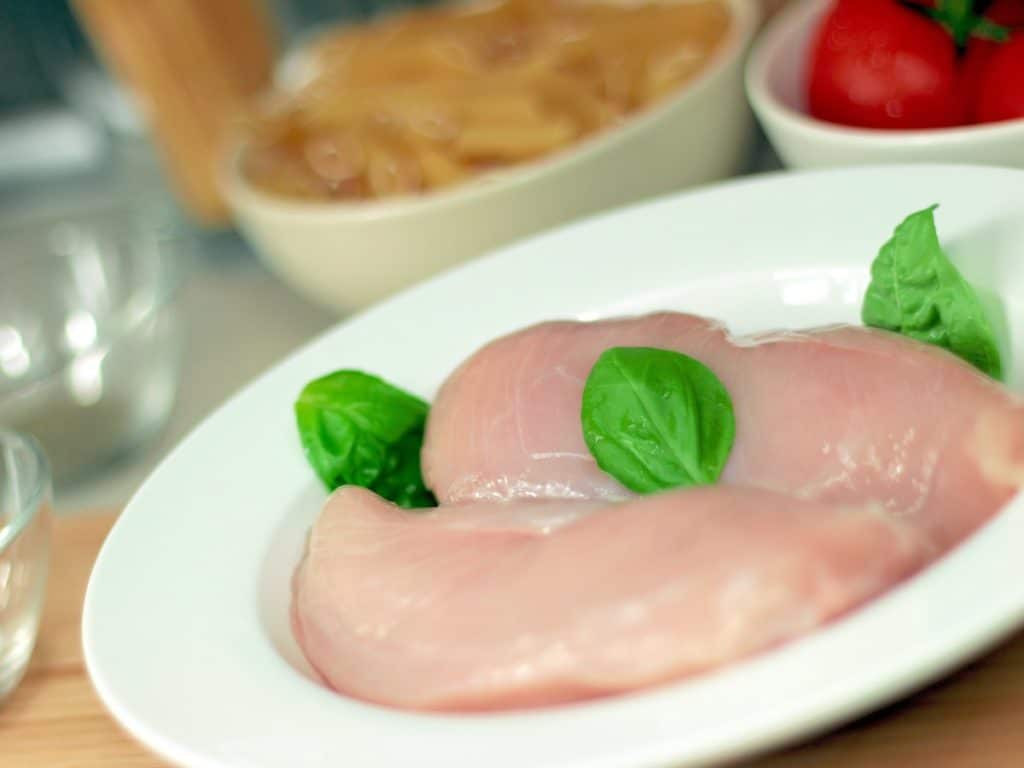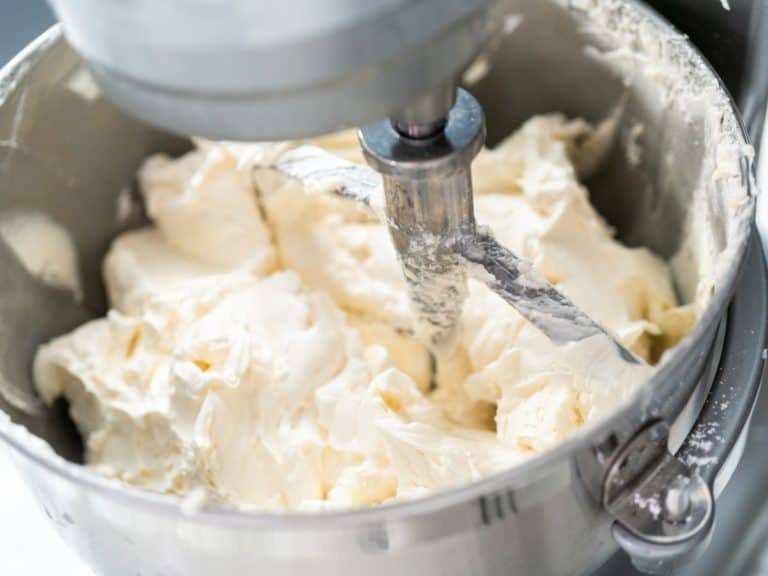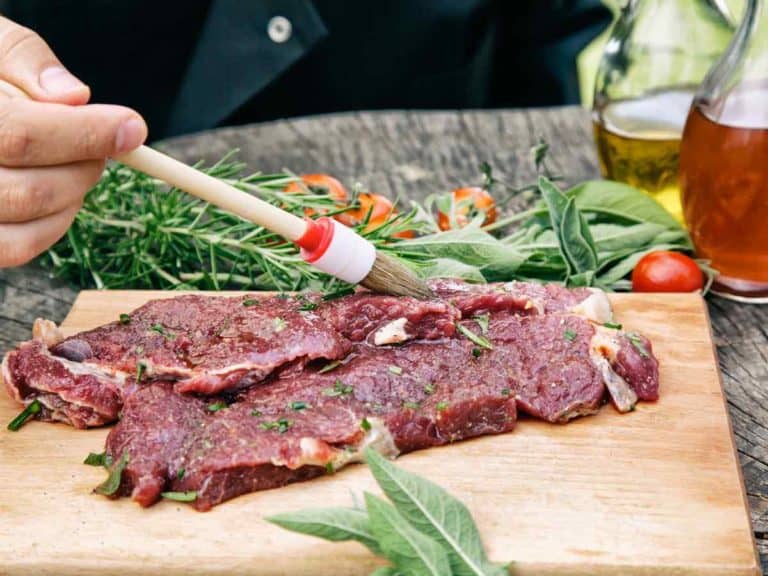What Is Chicken Tartare?
Chicken tartare is a dish you don’t see very often on offer in restaurants or people’s homes. This unique meal is considered a delicacy in some parts of the world, but it also has a bit of a checkered reputation, too.
Chicken tartare is a dish made of raw sliced, diced, or raw chicken dressed with aromatic herbs, salt, and acidic sauces. Chicken tartare is not recommended for consumption because raw chicken is easily contaminated by dangerous foodborne illnesses like salmonella.
Chicken tartare is a dish you can make at home. However, preparing raw chicken to eat can be dangerous if you don’t learn how to do it safely. Read on to learn about the safest preparations of chicken tartare and other related raw chicken recipes.

What Is Chicken Tartare Made Of?
Chicken tartare is a simple dish for the amount of controversy that surrounds it. The basis for chicken tartare is just sliced, diced, or grated chicken that is served raw as an appetizer. Raw chicken is the only major ingredient of chicken tartare, though most recipes include seasonings such as salt, herbs, sauces, and aromatics like wasabi.
What is Chicken Sashimi?
Chicken sashimi is a variation on chicken tartare where the raw chicken is served in larger pieces, typically sliced or cubed. In restaurants, you’re more likely to see chicken sashimi or torisashi on a menu than you will see chicken tartare since the texture of ground chicken is not super appealing to many diners.
Chicken sashimi isn’t common in the United States or Western countries due to strict food preparation regulations and the high risk of foodborne illness with serving raw chicken. However, it is considered a delicacy in Japan, and many yakitori restaurants serve it. (Source: Matador Network)
What Is Torisashi?
If you’re eating raw chicken dishes in Japan, you’ll run into several variations. Torisashiis the version of chicken sashimi where the chicken meat is served completely raw.
What Is Toriwasa?
Other than torisashi, the other raw chicken dish you’ll see at restaurants serving chicken sashimi is toriwasa. This version of chicken is served with the outside of the chicken lightly broiled and the interior of the chicken served raw. Toriwasa is considered slightly safer to eat than fully raw chicken since broiling the outside of the chicken helps sanitize it.
Why Is Raw Chicken Considered Safer in Japan?
Why are you more likely to see raw chicken dishes in Japan? Partially this is due to cultural differences. Raw meat and fish are also regularly served in Japanese cuisine.
The other difference is in how chicken in Japanese is raised and produced. Since Japan doesn’t mass-produce chicken like Western countries, most of the chicken served in major restaurants is sourced from small, organic farms. Chickens raised in these conditions are less likely to be contaminated with foodborne illnesses like salmonella than chickens raised in factory farms.
Good to Know: Ten Best Bulgogi Sauce Substitutes
What Does Chicken Tartare Taste Like?
Chicken tartare and sashimi is an acquired taste for many diners since these textures are not commonly found in many dishes. Raw chicken dishes are frequently described as tasting bland or mild, with a slightly unpleasant or sulfurous undertone depending on the diet of the chicken and how fresh the meat is.
What Is the Texture of Chicken Tartare?
The texture of chicken tartare is one of the most off-putting characteristics of this dish other than the potential for getting sick. Raw chicken is often described as being slimy or gelatinous in texture, similar to a fat-marbled piece of beef or a scallop. (Source: ChefSteps)
How Is Chicken Tartare Served?
Most of the methods for serving chicken tartare are aimed at two goals: improving the chicken’s texture/flavor, and making it safer to eat raw. Here are the preparations you’re most likely to see with chicken tartare:
- Freezing: In many cases, raw chicken is served semi-frozen or freshly thawed after being frozen. Freezing the meat helps kill any bacteria on the surface and also helps to improve the chicken’s gelatinous texture.
- Searing: Another way that raw chicken is sanitized before serving is for the outside of the meat to be lightly seared with a butane torch. This helps give the chicken a little more texture and can kill any surface bacteria which might make the diners sick.
- Salt: Salt is often incorporated into chicken tartare because salt is a natural antibacterial that can help prevent foodborne illness. It also helps improve the flavor of the raw chicken, which would be extremely bland without it. In Asian raw chicken dishes like torisashi, soy sauce is used as a substitution for table salt, but serves the same purpose.
- Acid: Acidic sauces are a popular condiment for raw chicken dishes since the acid can help sanitize the chicken and enhance its bland taste.
- Aromatics: Aromatics commonly added to sushi, such as ginger and wasabi, have natural antimicrobial properties that help prevent foodborne illness in sushi eaters. These condiments are also used in raw chicken dishes to help make them safer to eat and improve their flavor.
It should be noted that while all of these preparations do some good in making chicken tartare safer to eat, raw chicken is still one of the riskiest meals you can eat either at home or in a restaurant. This is the case no matter how careful you are.
Why Is Eating Chicken Tartare Risky?
The major risk of eating chicken tartare and other raw chicken dishes like chicken sashimi or torisashi is that raw chicken contains a lot of dangerous foodborne bacteria that can cause serious illness in humans if consumed. These bacteria include the following:
- Salmonella
- E. coli
- Enterococcus
- Staphylococcus
- Listeria
- Campylobacter
All of these bacteria species are capable of making a person so sick they have to be hospitalized. Symptoms of food poisoning related to these bacteria include diarrhea, nausea, vomiting, dehydration, body aches, fever, and fatigue. Foodborne illness can lead to serious gastric infections, especially those strains of bacteria which are resistant to antibiotics.
Risks of Eating Raw Chicken
The risks of eating raw chicken are quite severe. Forty-eight million people get sick each year in the United States from foodborne illness, with 128,000 of those people needing hospitalization. 3,000 a year on average die from food poisoning.
The majority of these deaths are caused by antibiotic-resistant listeria, e.coli, and salmonella.
Related Article: Does Freezing Kill Salmonella?
Raw chicken is considered a particularly serious carrier for foodborne illness, especially chicken that is sourced from agricultural industrial complexes. Here are some stats to consider from American agriculture:
- 62% of chickens are contaminated with Campylobacter
- 14% of chickens are contaminated with salmonella
- The majority of chickens raised for food are infected with antibiotic-resistant strains of bacteria that can be difficult to treat
In contrast, only 57% of organic chicken is contaminated with Campylobacter and almost none of it is contaminated with salmonella. However, there is enough danger in the chicken tartare becoming contaminated through basic food prep that most restaurants won’t take the risk of serving it.
Why Is Steak Tartare Popular and Chicken Tartare Isn’t?
You might almost never see chicken tartare on a menu, but steak tartare is a dish that shows up frequently at restaurants. You might be wondering what the difference is between serving raw beef and serving raw chicken.
So what are a few of the reasons that steak is served raw as tartare while chicken is generally avoided?
- Beef is much safer to serve raw than chicken. While you can still get foodborne illness from eating raw beef, it is much rarer to contract foodborne illness from raw beef than it is from undercooked chicken. The bacteria that chicken contains is also the reason it spoils faster.
- Raw beef has a better texture. Most diners consider raw beef to have a pleasant texture, which is why serving beef very rare is a common occurrence in restaurants. In comparison, chicken tartare has a gelatinous, almost slimy texture that many diners find disgusting rather than delicious.
If you want a good steak tartare, chances are you could find one in a nearby restaurant or safely make it yourself without having to worry about spending all night on the toilet. But if you want to risk eating chicken tartare, chances are you’re on your own to make it for yourself.
Is It Safe to Prepare Chicken Tartare?
Chicken tartare isn’t just unsafe to eat. It’s also relatively unsafe to prepare. Preparing raw chicken can increase the chances of cross-contamination if you aren’t diligent about separating your work spaces in the kitchen and sanitizing all of your preparation tools.
How to Sanitize Chicken for Chicken Tartare
If you’re intent on trying chicken tartare despite the risks, there are a few ways you can sanitize the chicken to make it safer to eat in a raw or semi-raw state. Here are some of the ways you can help prevent foodborne illness when preparing chicken tartare:
- Freeze the chicken. Freezing the chicken will kill any bacteria on the meat’s surface, helping to sterilize it. However, keep in mind that the chicken will have to be kept very cold since bringing it up to room temperature can cause it to spoil.
- Choose meat from the breast and tenderloin. These parts of the chicken are the furthest away on the chickens’ body from its GI tract, which is where most foodborne bacteria such as salmonella and Campylobacter comes from.
- Boil the chicken briefly. Par-boiling the chicken pieces you’re using for chicken tartare or sashimi can help kill any surface bacteria on the meat. If the chicken is fresh, the interior of the flesh should already be sterile.
- Chill your plates and cutting board. When you’re preparing chicken tartare or sashimi, you’re going to want to keep your cutting board and serving plates as cold as possible. This will help keep the chicken from developing any dangerous bacteria blooms before it can be served.
- Serve immediately. Needless to say, you’re not going to want to leave raw chicken out at room temperature for any length of time before serving it. Serve chicken tartare straight from the fridge to the plate.
We’ve already mentioned searing the outside of the chicken meat and salting it, which are also two good ways of making the meat more sanitary. Even if you take all of these precautions, however, there’s still a chance you might get sick.
Is Serving Chicken Tartare Legal?
In most countries, serving raw and undercooked foods is illegal as long as the diner is made aware through informed consent that the food they’re eating is known to be dangerous. A few select gourmet restaurants in the West serve raw chicken, but overall raw chicken is a delicacy reserved almost exclusively for Japan as a sushi or yakitori option.
The criteria for serving raw chicken and other raw/undercooked foods in restaurants are as follows (Source: Bitter Empire):
- It cannot be marketed towards a vulnerable demographic or a group of people who are highly susceptible to food poisoning
- It can’t be sold to children
- It can’t be sold to diners without informed consent (some restaurants might verify this through written liability waivers)
The only state in the United States that doesn’t allow raw or undercooked meat, poultry, and fish to be served is South Carolina. In other words, it might be legal to serve raw chicken in most places in America, but it isn’t a popular menu pick.
It hasn’t taken off in any other area of the world other than Japan, either.
What Restaurants Serve Chicken Tartare?
There are very few places in the world other than Japan where you can get chicken tartare or raw chicken dishes. In America, the only restaurant associated with this dish is Ippuku, a California Japanese restaurant with locations in Berkeley and San Francisco.
If you want chicken tartare outside of Japan, your only real options are to make it yourself. However, if you’re planning on making chicken tartare at home, be sure to source your chicken fresh from a small, organic local farm to reduce your risk of foodborne illness.
Chicken Tartare is Risky Business
Even though chicken tartare is exotic enough to have received top billing at sushi restaurants across Tokyo and California, the risks of preparing this dish far outweigh the entertainment value of eating it. If you’re not willing to take a chance on going to the hospital with food poisoning, this is one delicacy that is best avoided by most diners.
Read Also: What Is Chicken Poêlé?
![Best Store-Bought Marinades For Salmon [Full Prep Guide]](https://foodwine.com/wp-content/uploads/salmon-marinade-1557311318-768x576.jpg)
![Best Red Wines With Mexican Food [Burritos, Enchiladas, Tacos, etc.]](https://foodwine.com/wp-content/uploads/mexican-food-wine-264092945-768x576.jpg)



